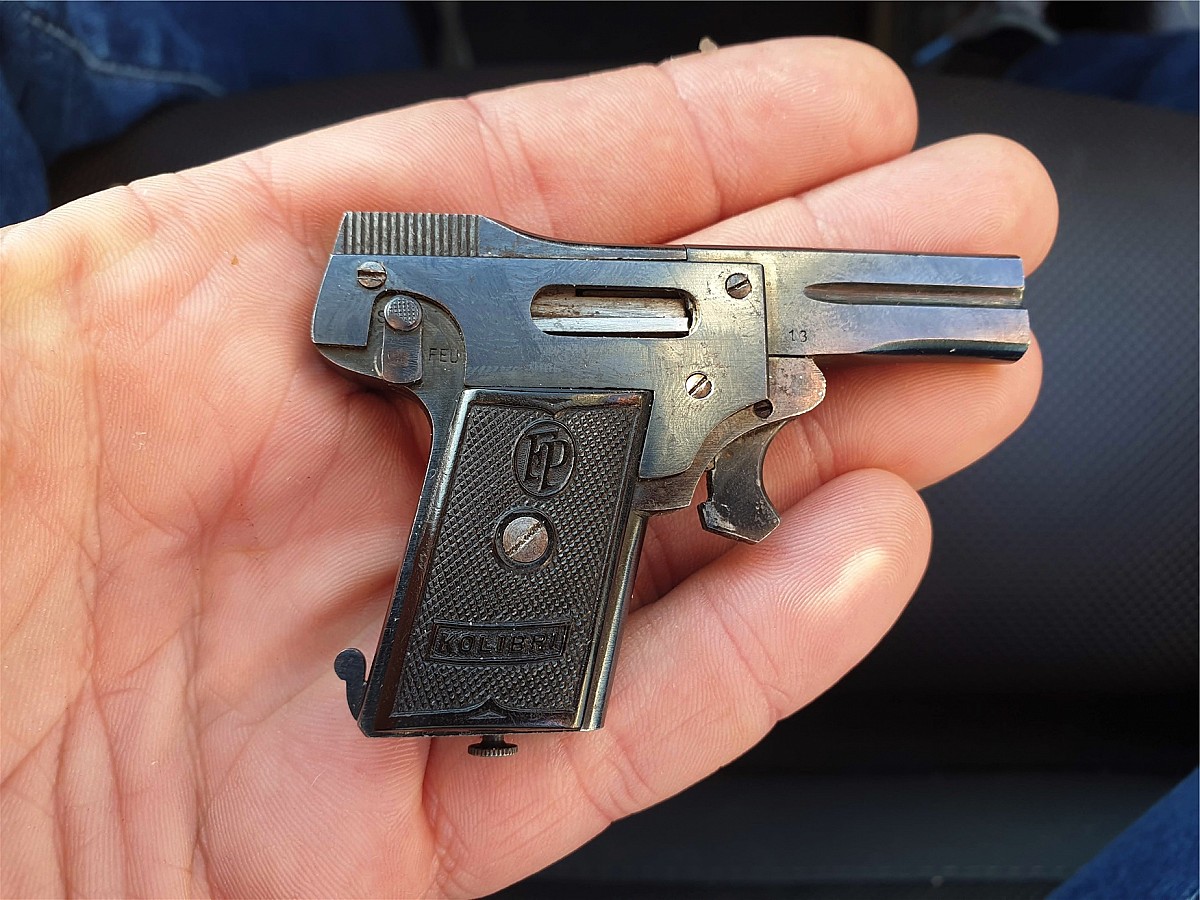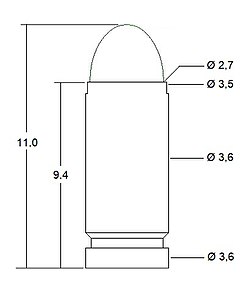
The 2.7x9mm Kolibri cartridge is the smallest commercially available centerfire cartridge ever designed. It was patented in 1910 and introduced in 1914 by Franz Pfannl, an Austrian watchmaker, with financial support from Georg Grabner. It was designed to accompany the Kolibri semi-auto or single-shot pistol, both marketed as self-defense weapons. The name is derived from Kolibri, the German word for hummingbird as a reference to the cartridge, and firearm's, incredibly small size.
The cartridge is headspaced on the mouth of the rimless and straight case. The bullet itself masses 0.2 grams (3 grains) and is estimated to have an average muzzle velocity of 200 meters per second (660 ft/s), resulting in a muzzle energy of 4 joules (3 ft-lbs). For perspective, an average person's punch measures 10-15 joules, meaning the round has less energy than a punch. 3mm and 4mm Kolibri cartridges were also developed, although little information is known about these two cartridges.

Cartridge Dimensions (in millimeters)

2.7x9mm Kolibri (left) next to .22lr (right)
Visit Wikipedia for more information and sources.
Are you an established retailer looking to reach more customers? Or perhaps a startup seeking to generate more web traffic? Sign up for a retailer account and begin listing your products today!
Sign Up Now